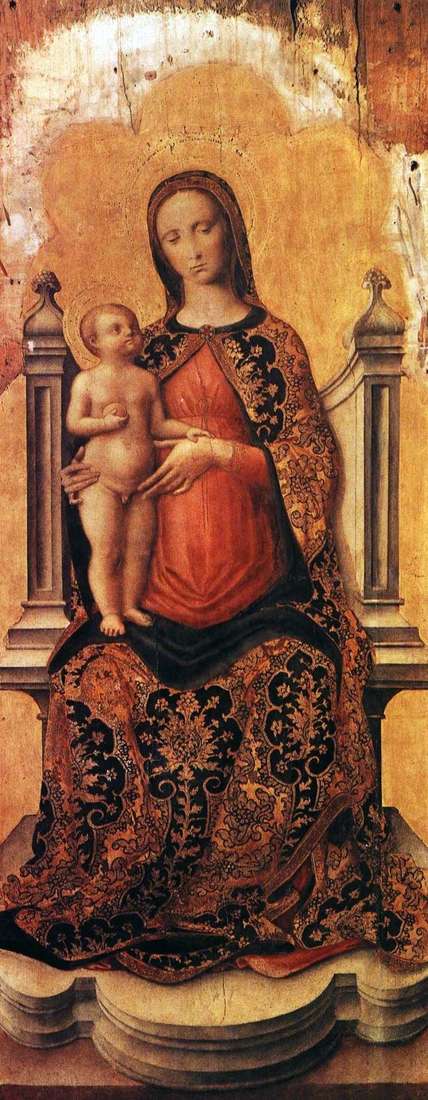
It came from the legacy of Count Janos Palffy, from his Pozhonsky Palace, in 1912. Contrary to the undeniable artistic value of this painting, it has not yet been possible to determine its author, although in style it is undoubtedly close to the well-known representative of the Murano school – Antonio Vivarini. Probably, the picture is the work of one of the best students who worked in the studio Vivarini.
The rich drawing of the brooch on the dress of the Madonna, a very plastic, detailed, slightly hard molding of the face, and also some other details indicate that the artist was influenced by other masters, to a certain extent – Jambono, but to a greater extent – Bartolomeo Vivarini. This mixed nature of painting is the reason for the uncertainty in establishing the authorship of the picture.
At first, the researchers considered it the author of Antonio Vivarini himself, then one of his workshop, for example Giovanni d Alemanni or Bartolommeo Vivarini, and it was also suggested that the Budapest painting is a joint work of these three masters.
For some time Berenson attributed it to the artist Antonio da Negroponte, who knows only one work. But later Berenson refused this assumption. Early work of Bartolommeo Vivarini is very similar to the work of his older brother; his extremely individual style also could not arise from day to day, and his first works could look like our picture. Probably, it was the central part of the folding altar, consisting of several boards. Undoubtedly, the same master wrote and “Madonna” in the altar of the church of Santa Maria della Colonna in Routillon.
 María con el bebé en el trono – Antonio Vivarini
María con el bebé en el trono – Antonio Vivarini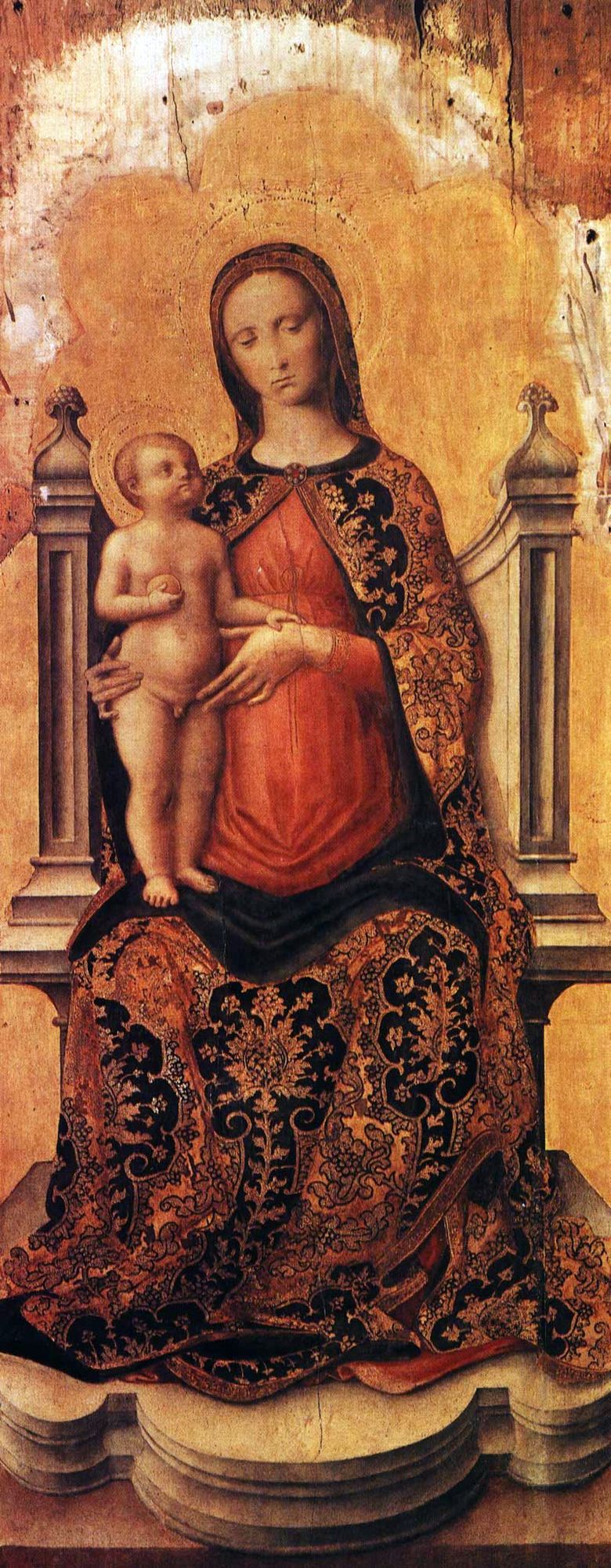 Maria avec le bébé sur le trône – Antonio Vivarini
Maria avec le bébé sur le trône – Antonio Vivarini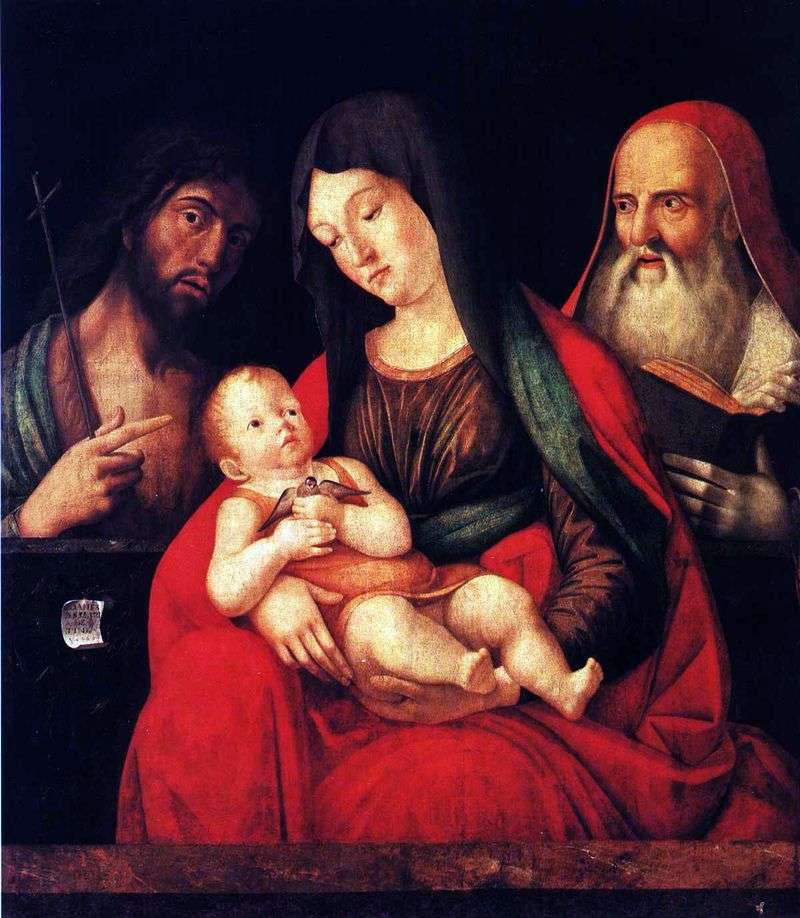 Mary with the Child, John the Baptist and Saint Jerome by Alvise Vivarini
Mary with the Child, John the Baptist and Saint Jerome by Alvise Vivarini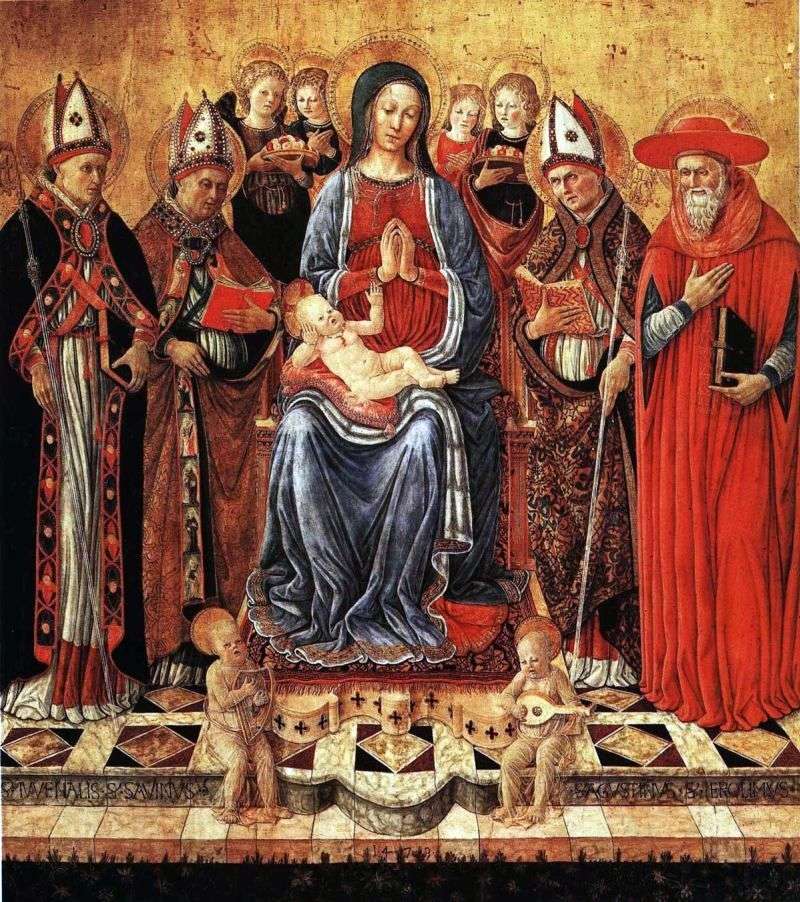 Maria and the baby on the throne, surrounded by the saints Juvenal, Sabina, Augustine, Jerome and six angels by Giovanni Boccati
Maria and the baby on the throne, surrounded by the saints Juvenal, Sabina, Augustine, Jerome and six angels by Giovanni Boccati María con el bebé, Juan el Bautista y San Jerónimo – Alvise Vivarini
María con el bebé, Juan el Bautista y San Jerónimo – Alvise Vivarini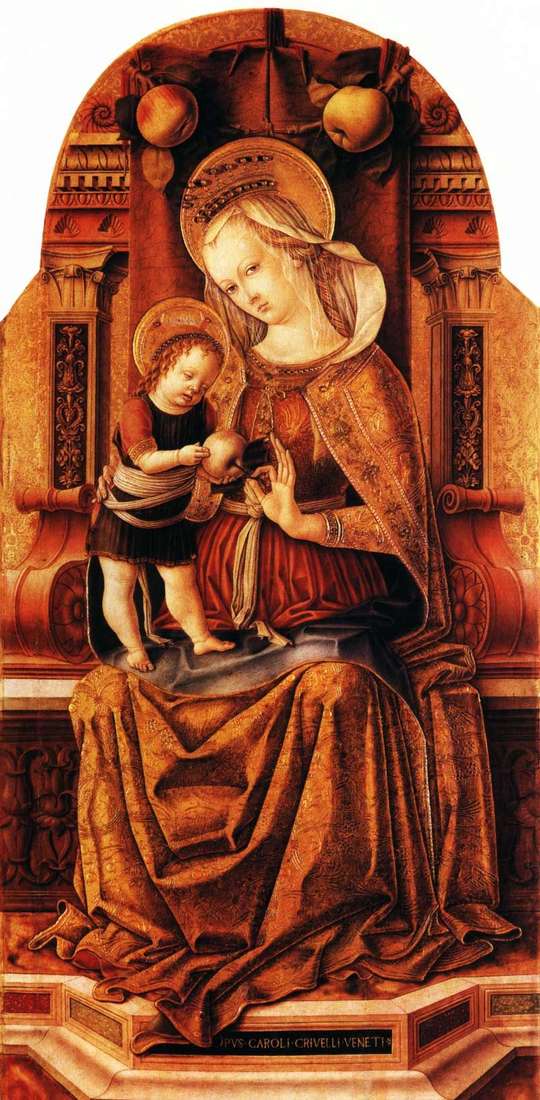 Maria with the baby on the throne by Carlo Crivelli
Maria with the baby on the throne by Carlo Crivelli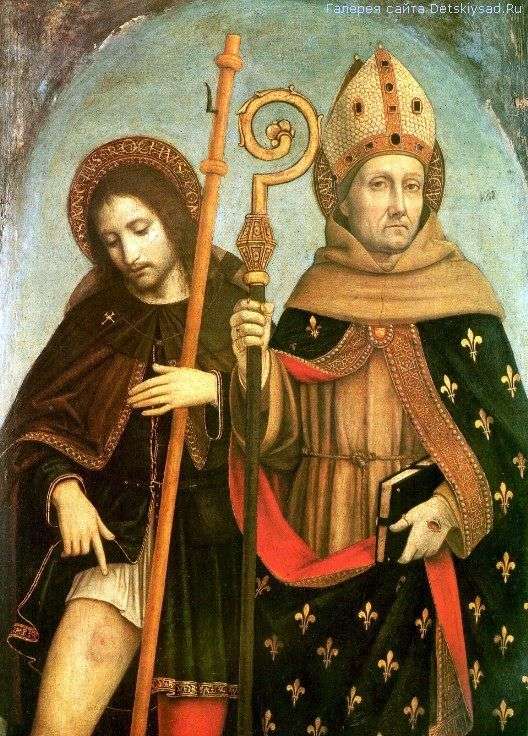 Saint Roch and Saint Louis of Toulouse by Ambrogio Borghonne
Saint Roch and Saint Louis of Toulouse by Ambrogio Borghonne Maria with a sleeping baby by Piermatteo da Amelia
Maria with a sleeping baby by Piermatteo da Amelia